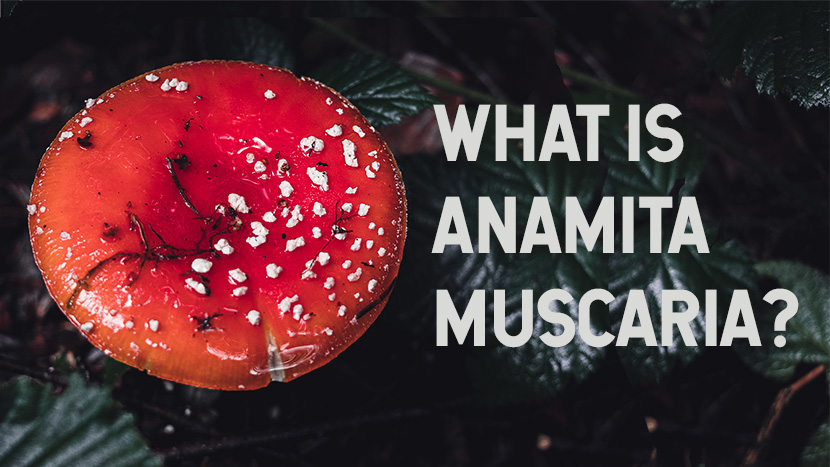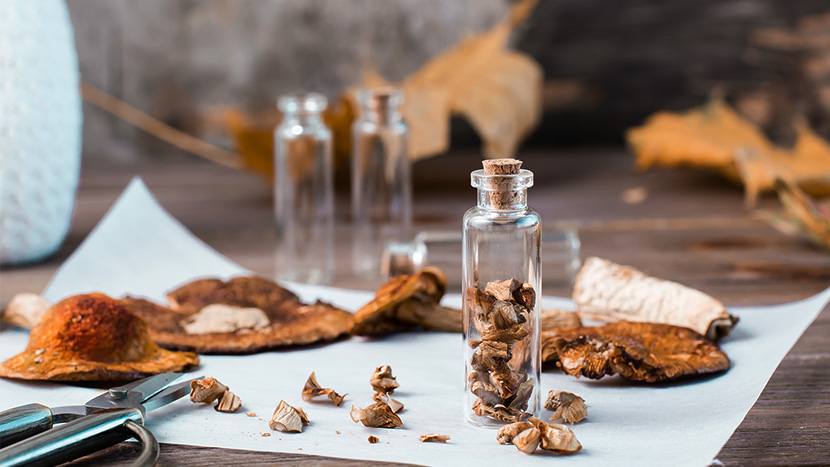Exploring the Enigmatic World of Amanita Muscaria: Myths, Legends, and Scientific Insights
Amanita muscaria is the most iconic mushroom in the world. Anyone who imagines a fairy tale illustration of a toadstool likely pictures this renowned fungus’s red cap and white spots, which appear everywhere in pop culture, from video games to cellphone cases.
Throughout history, many cultures have viewed Amanita muscaria as magical due to its unique psychoactive properties, making it a popular element in ancient myths, folklore, and religion. Many believe it might have inspired the legend of Santa’s flying sleigh.
This article explores Amanita muscaria myths and legends, examining its active ingredients, modern scientific insights, and how to consume it responsibly.
An Overview of Amanita Muscaria, Active Ingredients, and Hallucinogenic Properties
Amanita muscaria’s origins begin in forests throughout the Northern Hemisphere. Famous for its bright red cap and snow-white spots, humans took early notice of this mushroom.
Uses of its psychoactive properties date back over 10,000 years, making it possibly the world’s oldest known intoxicant. Although the mushroom does have psychoactive properties, it is legal and accessible in most of the United States. Learn more about Amanita Muscaria legality.
Throughout the ages, indigenous healers (shamans) believed Amanita muscaria allowed them to reach heightened consciousness and connect with the spirit world. They didn’t know it then, but the mushroom’s “powers” come from its natural alkaloids (psychoactive compounds), mainly muscimol, ibotenic acid, and muscarine.
Muscimol
Muscimol is the major compound responsible for Amanita muscaria’s psychoactive effects. Chemically, muscimol is a potent agonist (activator) of GABA, a brain neurotransmitter known for calming effects that plays a significant role in controlling body functions like mood, anxiety, and sleep.
Ibotenic acid
Ibotenic acid is a neurotoxic compound in Amanita muscaria. Consuming too much can cause hallucinations and adverse effects like confusion, vomiting, and nausea. Ibotenic acid is also a prodrug to muscimol, which converts to muscimol when someone dries, boils, or ingests the mushroom.
Muscarine
Muscarine is a natural psychoactive compound with toxic properties. Although it occurs in Amanita muscaria in trace amounts, muscarine still plays a role in some of the mushroom’s reported adverse risks, such as excessive sweating, crying, salivation, and abdominal cramps.
Amanita muscaria mushrooms can cause visual and auditory hallucinations at high doses. However, most people describe them as dream-like and less intense than those caused by magic mushrooms. Higher doses can also cause.
- Heightened senses
- Changed perception of time
- Increased strength
- Enhanced intelligence
Amanita Muscaria Ancient Uses and Mythology
Amanita muscaria’s spiritual and therapeutic uses span centuries, linking it to the myths and folklore of various cultures. Some of its most prominent users were Siberian Shamans, who would incorporate the mushroom into religious ceremonies, using it to achieve a trance-like state, gain spiritual clarity and growth, and for healing practices.
According to some legends:
- Siberian reindeer herders used dried Amanita muscaria for stamina. Some say it gave them strength and energy to help them keep up with the herd and stave off fatigue, similar to a stimulant like coffee.
- Scandinavian countries linked Amanita muscaria’s stimulating properties to magical powers, like Thor’s hammer Mjolnir. Stories say it could provide superhuman strength or the ability to shape-shift.
The Legend of Santa Claus
Amanita muscaria has intriguing ties to the Christmas holiday and the legend of Santa Claus.
Here’s how the story goes:
Siberian shamans traditionally wore attire that mimicked Amanita muscaria during their sacred mushroom harvesting rituals. These red and white outfits paid homage to the fungi’s spiritual importance. Shamans then hung the mushrooms on evergreen trees, much like holiday decorations, to preserve them.
According to the myth, Siberian reindeer also consumed Amanita muscaria. Interestingly, they could metabolize the mushroom’s toxins without harm. Some stories say they behaved drunkenly, pranced around, and even “flew” after consuming the red-and-white species.
As the story goes, Siberians would drink their reindeer’s urine to safely obtain the mushroom’s hallucinogenic properties without the toxic elements. Then, together, they would “fly through the air,” distributing gifts to the nearby houses.
Scholars believe these tales created the legend of Santa Claus, who dresses in red and white, carries a sack with special gifts, comes and goes via the chimney, flies with reindeer, and lives in the “far north.”
Drink of the Gods
Another myth links Amanita muscaria with one of the most spiritual drinks in history.
Anthropology studies reveal the mushroom as a possible source of the divine “Soma” that ethnic groups in modern India and the Middle East worshiped and ritually consumed 4,000 years ago.
Hymns in the Rig Veda, one of the four sacred Hindu texts, describe “Soma” as an inebriating ritual drink that gives people divine powers. After offering Soma as a libation to the gods, priests often consumed the remainder.
- Ancient people highly valued the holy brew for its exhilarating, probably hallucinogenic effects.
- The euphoria and invincibility experienced by those who drank it are attributed to Amanita muscaria’s primary ingredients, muscimol and ibotenic acid.
- In addition to a drink, early Hindus treated the mushroom as a living god, making Amanita Muscaria the only “plant” known to have been deified by ancient man.
Modern Therapeutic Benefits of Amanita Muscaria
In addition to Amanita’s mystical qualities, cultures have used it for various therapeutic purposes, like sleep, pain, and stress. Modern research is in the early stages. However, preliminary studies show promising results.
- A 2022 animal study showed muscimol could protect against systemic inflammatory responses.
- Muscimol research indicates Amanita muscaria could benefit brain health, treating symptoms associated with Huntington’s Disease and Alzheimer’s.
- A study on the potential antioxidant properties of muscimol shows it has broad disease protection benefits.
Microdosing Amanita
Today, a growing population is microdosing Amanita muscaria for its health benefits.
Microdosing is taking small, sub-perceptual doses of a substance to enhance creativity, productivity, and overall well-being. Many users describe small amounts (1-2 mg of muscimol) as calming and pain-relieving.
Commonly reported benefits include:
- Relaxing euphoria
- Warm body sensations
- Analgesia (pain relief)
- A sense of peace and sleepiness
- Increased ability to meditate
- Better sleep quality
Amanita Muscaria Risks and Responsible Use
Despite its beautiful appearance, whole, unprocessed Amanita muscaria mushrooms can be poisonous and extremely dangerous. Ingesting even a small amount of raw Amanita muscaria can solicit an entourage of unwanted effects, including:
- Sweating
- Nausea and vomiting
- Blurred vision
- Involuntary body movements
- Coma (severe cases)
The ibotenic acid and muscarine in fresh mushrooms are most responsible for the poisonous and adverse side effects of Amanita muscaria. To avoid this, consumers should seek out lab-tested Amanita extracts or dried mushrooms with high muscimol levels and low to no ibotenic acid or muscarine. Consumers should look for lab tests to verify potency and safety.
The Bottom Line
Amanita muscaria, the world’s most iconic-looking mushroom, has intrigued cultures for centuries. Its potential toxicity and psychoactive properties are unique from other psychedelic substances, giving it a mysterious allure that ancient people harnessed for spiritual ceremonies and incorporated into myths like Thor and Santa Claus. Today, the mushroom’s legal status and potential therapeutic effects are giving this magical mushroom new life as a psychoactive substance and an alternative medicine.


































































































